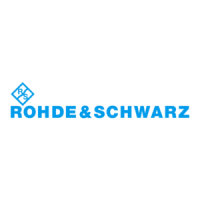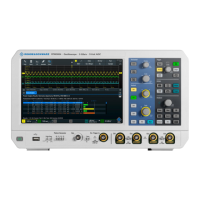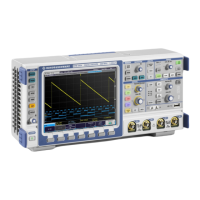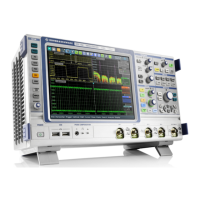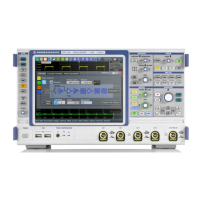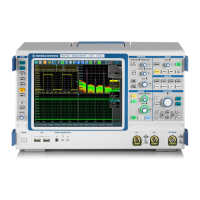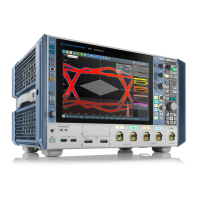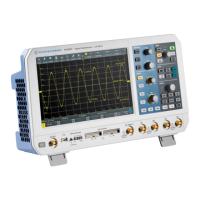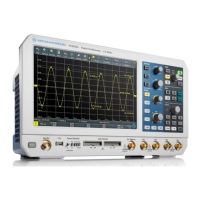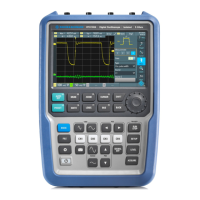Waveform analysis
R&S
®
RTM3000
114User Manual 1335.9090.02 ─ 09
The determination of track values requires a threshold. When the pulse crosses the
threshold, the pulse width is measured and displayed as track value. To detect the real
transitions of the pulse signal, the hysteresis is used. The unit is set automatically.
UL
Sets the threshold for unipolar track sources, or the upper level for bipolar sources.
The signal is measured at the crossing points of the signal with the threshold.
Remote command:
CALCulate:MATH<m>:TRACk:THReshold[:UPPer] on page 483
LL
Sets the lower level for bipolar track sources, which determines the crossing points on
negative pulses.
Remote command:
CALCulate:MATH<m>:TRACk:THReshold:LOWer on page 483
Hyst
Sets the hysteresis for correct edge detection.
Remote command:
CALCulate:MATH<m>:TRACk:THReshold:HYSTeresis on page 483
Edge
Sets the rising or falling edge as a reference for each measurement. The setting helps
to determine values in terms of the power stage switching state.
For unipolar sources, the on edge is the rising edge, and the off edge is the falling
edge.
In the bipolar case, all transitions are inverted for the negative branch. For positive pul-
ses, the rising edge is the on edge, and for negative pulses, the falling edge is the on
edge. You can also subtract out the effect of the double pulse, which arises due to the
inversion: select "On, Double Pulse" or "Off, Double Pulse"
Remote command:
CALCulate:MATH<m>:TRACk:EDGE on page 482
CALCulate:MATH<m>:TRACk:DPULse[:ENABle] on page 482
7.2.6.2 Demo for tracks
Short demo tutorials explain PWM signals and the track function.
Mathematics
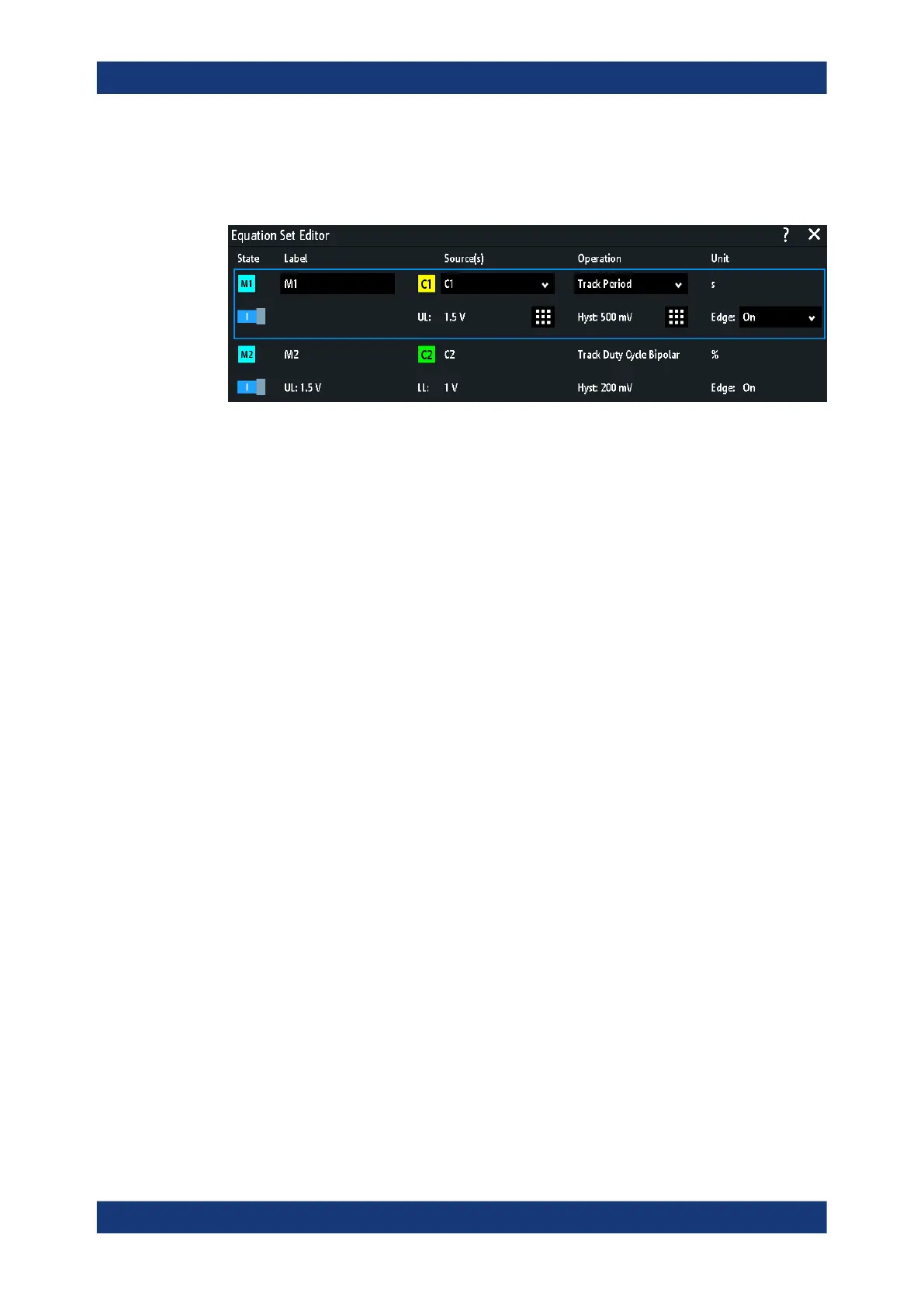